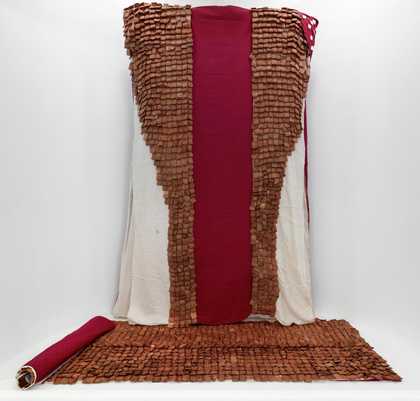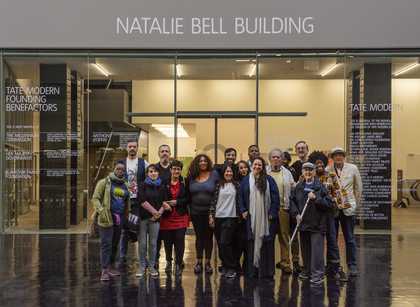We are living through dark, unprecedented times, with our movements curtailed and our lives upended by a global pandemic. Amid all the upheaval, it may seem as if there’s a shortage of hope, but this could be seen as an opportunity to reassess what we value, how we live and how to bridge the worrying ‘them’ versus ‘us’ mentality that has pervaded recent national conversations. One way out of this divisive mindset might be to look at how museums such as Tate can undertake socially engaged, community-rooted art. Tate Exchange, located on the fifth floor of Tate Modern’s Blavatnik Building, and in the first-floor gallery at Tate Liverpool, offers a model for a new way forward, through conversation, participation and collaboration.
For the past couple of years, I have seen at close quarters how Tate Exchange has, through its programming, opened up Tate Modern, adjusting its function to that of a civic space in which museum audiences are integral to the doing and making of art – not just in the political or social sense, but also in terms of aesthetic value.
Tate Exchange has an Associates programme, where arts, education, health and wellbeing, and community development organisations come together to look at oft-contested subjects. The public are asked to think through ideas, and test methods and participatory activities that explore how art can change society – in a sense, reimagining the museum as a space for collective making, playing and doing.
Since Tate Exchange was founded, I have taken part in a number of their activities. In 2018, as part of Lost in Europe, a journalism project investigating the disappearance of child migrants in Europe, we organised a workshop to unpack the data available on these missing children. Alongside this, the Brighton-based artist Bern O’Donoghue presented an immersive installation that bore witness to the thousands of migrants and refugees who have died, and continue to die, attempting to cross the Mediterranean Sea.
In the autumn of 2018, I was invited as part of the Tania Bruguera and Tate Neighbours Our Neighbours programme to select something I had read, and to host an informal discussion as part of its lunchtime chats series. I chose an excellent piece on identity politics by Gary Younge, published in the Guardian. I was heartened by how the participants – including tourists, a young man from Northern Ireland volunteering at the museum, and an elderly resident living nearby – began to interact in response to this article: they started to unpick the concepts of identity, populism and belonging. As part of the chat, I asked them all to commit to one neighbourly action: something as simple as reading a text, talking to someone different to themselves or checking in on an elderly neighbour.
This simple example shows us that art, even through the most modest of interactions, can help us not only to see the world anew, but to be kinder and more community-minded. We need cultural spaces, such as Tate, where radical forms of democratic imagination can be explored, where ideas can be tested, and where people from across the social spectrum can take part. In recent years, we have seen the hollowing out of civic spaces, with massive cutbacks to community centres, youth groups, libraries and museums, and this comes coupled with the economic hardships that many in the community face. Now, more than ever, we need our art institutions to open their doors and share their knowledge.
This pandemic has changed the everyday. These last months, we have seen severe structural changes that may stay with us for some time. The official rhetoric and framing of this ‘war effort’ and allusions to the Blitz spirit seem a tad overdone, but the truth is we are faced with stark realities. I feel that Tate Exchange can be a useful template to turn to at this time: it has shown how to rattle the everyday hierarchies underpinning the making and showing of art. Merely calling something ‘socially engaged art’ does not make it so. Undertaking socially engaged art should not be an administrative afterthought. Communities have to be empowered, and the curators, the artists and the managers should also reflect the diversity of these communities.
Working in this new way could lead to a return to the local. In the last few decades, globalisation has been the defining idea, but a return to the local should not mean closed borders or national echo chambers. The solutions to the global problems that we face, such as the climate crisis or indeed this very pandemic, lie in cross-border connections and collaborations.
We may continue to live in the shadow of this pandemic for a long time to come, but, for me, at least there is hope that models like Tate Exchange can point towards a more promising future: a community of practice in which everyone is an artist.
For more information on Tate Exchange see tate.org. uk/tate-exchange. Tate Exchange is supported by Maryam and Edward Eisler and Tate Patrons. With founding support from Freelands Foundation.
Ismail Einashe is a journalist and writer, and member of Tate Etc.’s editorial board.


